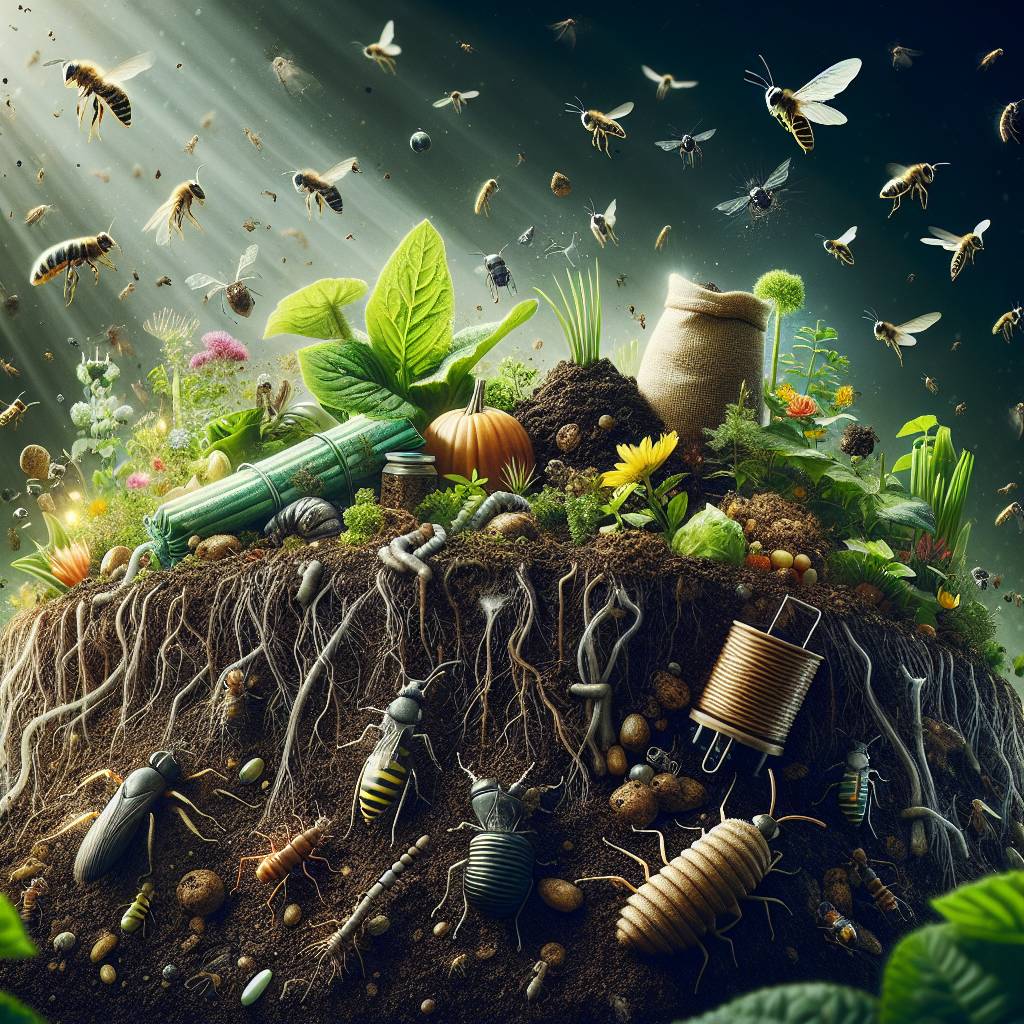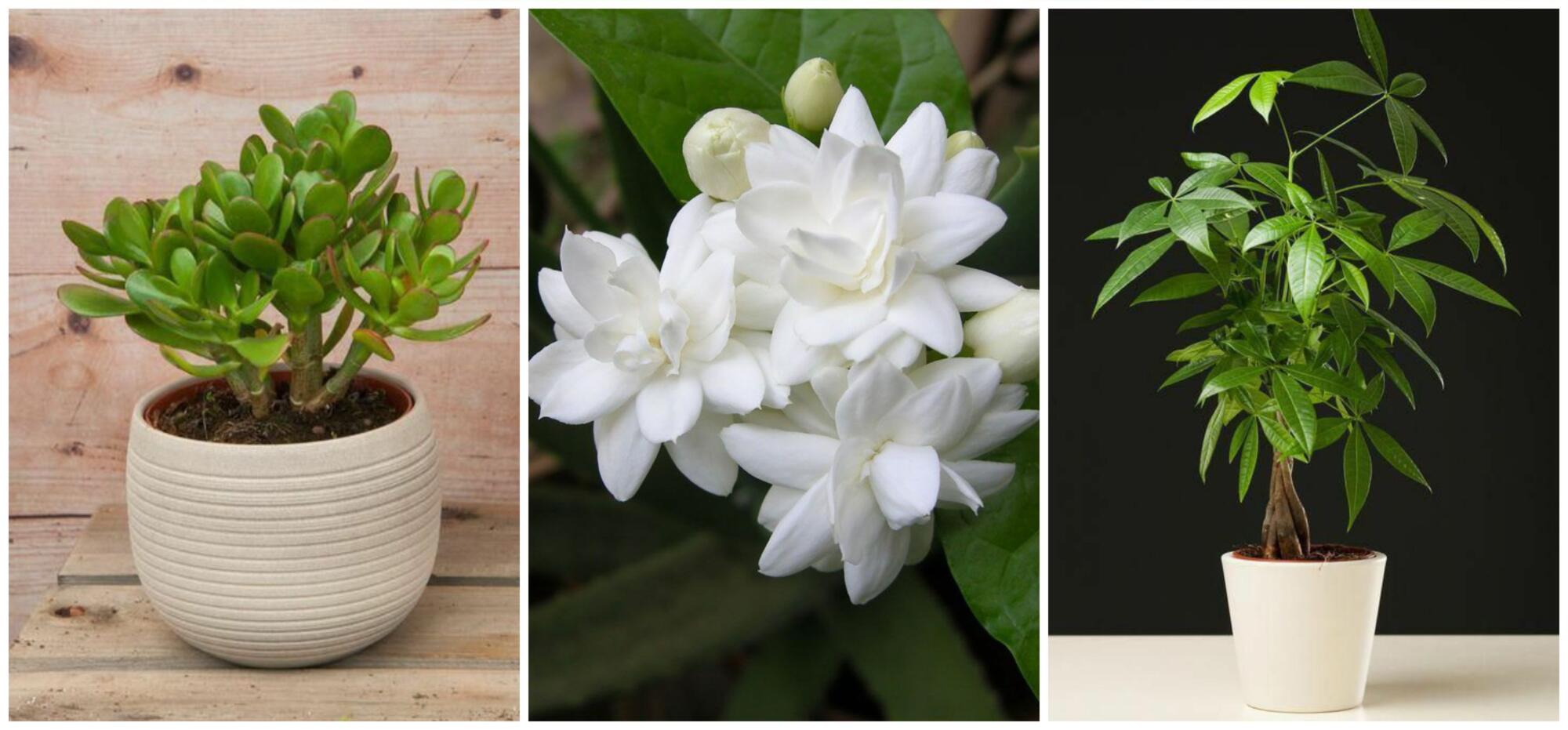Struggling with persistent soil-borne pests wreaking havoc on your garden? We’ve got the lowdown on organic solutions for target pests and pest problems that will have those pesky critters packing their bags and heading for the hills. Say goodbye to harmful chemicals and hello to natural remedies that won’t compromise your soil’s health. From beneficial nematodes to botanical insecticides, we’re diving into a world of eco-friendly alternatives that deliver knockout blows to unwanted underground guests.
There’s no need to choose between effective pest control and environmental sustainability. Join us as we explore how these organic marvels can turn the tables on soil-borne pests, giving you a thriving garden without the guilt. Get ready to bid adieu to target pests – naturally.
Key Takeaways
- Understanding the relationship between soil health and pests is crucial for implementing effective organic pest control methods.
- Cultural practices, such as crop rotation and maintaining proper soil moisture, play a significant role in managing soil-borne pests without the use of chemicals.
- Organic matter, including compost and cover crops, can be utilized as a tool for pest control by promoting beneficial microorganisms and enhancing soil biodiversity.
- Implementing non-chemical approaches, such as using beneficial insects and natural predators, can effectively suppress diseases and pests in an organic garden.
- Enhancing plant resistance through proper nutrition and promoting biodiversity can help exclude pests and reduce the risk of infestations in an organic garden.
- Utilizing humic substances can impact pest dynamics positively by improving soil structure, nutrient availability, and the overall health of the soil ecosystem.
Understanding Soil Health and Pest Relationships
Impact of Soil Health on Pest Populations
Healthy soils play a crucial role in managing pest populations. The condition of the soil directly influences the presence and abundance of pests that can harm plants. When the soil has a balanced ecosystem, it can naturally suppress harmful organisms that may cause damage to crops.
For instance, when the soil lacks essential nutrients or has poor structure, it becomes more susceptible to pest infestations. This means that soil fertility is not just important for plant growth but also for maintaining a natural defense system against pests. In healthy soils, beneficial organisms such as bacteria, fungi, and other microorganisms help control pests by preying on them or competing for resources.
Beneficial insects like ladybugs and predatory nematodes thrive in well-structured soils with good drainage, which aids in controlling harmful pests like aphids and root-knot nematodes. Therefore, understanding how properties such as texture, pH levels, organic matter content influence soil health and target pests is vital to effectively manage pest populations without relying on chemical interventions.
Enhancing Soil Health for Pest Control
Improving soil properties through organic solutions can significantly impact pest susceptibility. Implementing practices like cover cropping helps improve soil structure, increase organic matter content, and foster a diverse microbial community known for suppressing pathogenic organisms.
Furthermore, incorporating compost into the soil enhances its fertility and promotes biological diversity essential for natural pest control mechanisms. Compost provides essential nutrients while improving water retention capacity – factors crucial in maintaining healthy soils that deter destructive pests from thriving.
In addition to this approach are crop rotations and intercropping methods; these techniques disrupt pest life cycles by creating an unfavorable environment for their survival due to changes in available host plants or increased biodiversity within fields. These strategies work together to create an inhospitable environment for detrimental pests without compromising overall crop productivity.
Organic Pest Control Methods Overview
Natural Solutions
Organic pest control methods are all about using natural solutions to manage pests without relying on harmful chemicals. These techniques prioritize the health of the soil and its ecosystem, creating a balanced environment that naturally deters pests.
Farmers and gardeners often turn to strategies like crop rotation, companion planting, and article. For example, rotating crops such as tomatoes with legumes can help disrupt the life cycles of soil-borne pests, reducing their populations over time. Planting certain herbs or flowers alongside vegetables can repel unwanted insects by releasing scents that mask the smell of host plants.
Biological Controls Another vital aspect of organic pest management is utilizing biological controls. This involves introducing natural predators or parasites into an ecosystem to keep pest populations in check. For instance, ladybugs are commonly used to combat aphids in gardens because they feed on these destructive pests.
The Soil Food Web and Its Role in Pest Management
Interconnected Organisms
The soil food web is a complex system of interconnected organisms that play a crucial role in managing soil-borne pests. Beneficial microorganisms, such as fungi and bacteria, can effectively suppress pest populations by competing for resources or preying on them. For instance, predatory nematodes feed on insect pests like aphids, helping to naturally control their numbers.
Enhancing the biodiversity within the soil promotes a healthy soil food web. This biodiversity creates an environment where multiple organisms work together to keep pest populations in check. By fostering this diversity, it becomes easier to manage and reduce pest pressure without relying on chemical interventions.
Microbial Diversity
One of the key components of the soil food web is microbial diversity. A diverse community of microorganisms helps maintain balance within the ecosystem by providing natural checks and balances against insect pests. For example, certain types of fungi produce compounds that are toxic to insects, acting as a natural defense mechanism for plants against pests.
A study published in Applied Soil Ecology (Appl Soil Ecol) highlighted how increasing microbial diversity can lead to greater suppression of pest populations. When there’s a rich variety of beneficial microorganisms present in the soil, they create an environment that’s hostile to harmful pests while nurturing conditions that support plant health.
Promoting Healthy Soils
By focusing on enhancing soil biodiversity through organic practices like crop rotation and incorporating cover crops into agricultural systems, farmers can actively promote healthier soils with reduced susceptibility to pests. These methods help create environments where beneficial organisms thrive while deterring harmful ones from dominating in the article.
In addition to these practices, avoiding excessive tillage can also contribute significantly towards maintaining a healthy soil food web. Excessive tillage disrupts the habitats of beneficial organisms while promoting conditions favorable for certain destructive pests, article.
Cultural Practices for Managing Soil-Borne Pests
Proper Sanitation
Maintaining proper sanitation practices is crucial in preventing the spread of soil-borne diseases. This involves removing and destroying any infected plant material from the article, as well as cleaning tools and equipment to prevent contamination. By doing so, the spread of harmful pathogens that can lead to pest infestations is significantly reduced. For example, regularly removing crop residues from fields can help eliminate potential habitats for disease-causing organisms.
Crop Diversity Crop diversity plays a vital role in managing soil-borne pests by disrupting their life cycles and reducing infestations. Planting a variety of crops helps break the cycle of specific pests that target particular plants. For instance, alternating different types of crops within a field creates an environment where pests have difficulty establishing large populations due to the lack of continuous food sources in the article.
Timing Planting Timely planting is an effective strategy for minimizing damage caused by soil-borne pests, article et al. By aligning planting schedules with periods when pest activity is at its lowest, farmers can reduce the risk of extensive damage to their crops. This practice disrupts the lifecycle of many soil-dwelling pests and limits their ability to cause harm during vulnerable stages of plant growth.
In agriculture, employing cultural practices such as proper sanitation measures not only reduces disease incidence but also contributes significantly to overall pest management strategies. Crop rotation, article, has been shown to decrease populations of certain nematode species by up to 90%, highlighting its effectiveness in controlling these destructive organisms without relying on chemical treatments.
Organic Matter as a Tool for Pest Control
Soil Structure and Fertility
Adding organic matter to the soil is like giving plants a shield against pests. The improved structure and fertility of the soil help plants become more resistant to pests. When the soil is rich in organic matter, it becomes an inhospitable environment for many types of pests.
Plants grown in healthy, organically-rich soil are less susceptible to pest damage because they have stronger immune systems. This means that they can fight off attacks from harmful organisms such as fungi and other microbial pests more effectively.
The presence of beneficial microorganisms in organic matter also helps control harmful pathogens that cause diseases like root rot. These microorganisms work by outcompeting or directly attacking disease-causing organisms, thus preventing root diseases.
Repelling and Inhibiting Pests
When organic matter decomposes, it releases compounds that repel or inhibit pests. For example, some organic materials release substances that make the environment unfavorable for certain pest species. This natural defense mechanism helps protect plants from potential harm caused by these unwanted invaders, article.
Organic solutions derived from plant-based materials can also contain compounds with pesticidal properties which act on pests directly or indirectly through their feeding behavior or life cycle stages.
Mulching with organic materials further enhances pest control efforts by creating a physical barrier against soil-borne pests. By covering the soil around plants with mulch made from organic matter such as straw, wood chips, or leaves, you create an obstacle course for crawling insects trying to reach your precious crops’ roots.
This protective layer not only acts as a barrier but also retains moisture in the soil while regulating its temperature—creating an environment where water-loving predators of harmful pests thrive and keep them under control naturally.
Non-Chemical Approaches to Disease and Pest Suppression
Biofumigation
Biofumigation is a biological control method that utilizes plant compounds to naturally suppress soil-borne pathogens and pests in the article. This process involves incorporating specific plants, such as mustard or brassicas, into the soil. As these plants decompose, they release natural compounds that have a suppressive effect on various soil-borne pests and diseases. For instance, when glucosinolates in mustard plants break down, they produce chemicals that can help manage nematodes and fungi.
This approach has garnered significant attention from researchers due to its potential in disease control. Studies have shown promising results regarding the ability of biofumigation to target disease-causing organisms without the use of synthetic chemicals in the article. Furthermore, it promotes sustainable agricultural practices by harnessing the power of natural plant compounds.
Beneficial Nematodes Another effective non-chemical approach involves using beneficial nematodes to combat specific pests while safeguarding beneficial organisms in the soil. These microscopic roundworms are capable of targeting various pest species like root-knot nematodes or flea larvae without harming other organisms present in the ecosystem, according to the article.
Research into this method has revealed its remarkable efficacy in suppressing certain pest populations naturally. The activity of these beneficial nematodes presents an environmentally friendly solution for managing soil-borne pests without resorting to harmful chemical treatments.
Solarization
Solarization, an eco-friendly technique, suppresses disease problems caused by soil-borne pathogens and pests through solar heat treatment. This method involves covering moistened soil with clear plastic sheets during warm months. The trapped solar radiation heats up the covered area, effectively killing off unwanted microorganisms such as bacteria, fungi, and weed seeds.
The practice of solarization not only helps with sanitation but also aids in reducing pathogen levels within soils before planting crops or establishing new gardens. It’s an excellent example of how harnessing natural elements like sunlight can be utilized as a powerful tool against detrimental agents lurking beneath the ground.
Enhancing Plant Resistance and Pest Exclusion Organically
Selecting Resistant Plant Varieties
Selecting resistant plant varieties is a crucial strategy. By choosing plant varieties that naturally resist common pests, such as certain types of tomatoes that are resistant to nematodes, gardeners can significantly reduce the susceptibility of their plants to these destructive organisms. For instance, some tomato plants have been bred specifically for their resistance to various soil-borne diseases, providing an effective organic solution without the need for chemical interventions.
Resistant plant varieties not only minimize the risk of pest infestations but also contribute to sustainable and environmentally friendly organic farming practices. These specially developed plant varieties offer a natural defense mechanism against soil-borne pests, promoting healthier crop yields without relying on synthetic pesticides or harmful chemicals.
Pest Exclusion Using Physical Barriers
In addition to selecting resistant plant varieties, employing physical barriers like row covers or netting is another effective method in organic farming to prevent soil-borne pests from reaching vulnerable plants. These physical barriers act as shields against various insects and other organisms that may cause harm to crops. By creating a barrier between the pests and the plants, gardeners can effectively mitigate potential damage caused by these intruders.
For example, using row covers over young transplants can protect them from being attacked by insect pests during early growth stages. This approach not only safeguards the delicate seedlings from potential harm but also eliminates the need for chemical treatments that might otherwise be used in conventional pest control methods.
Providing Optimal Growing Conditions
Moreover, providing optimal growing conditions plays a pivotal role in strengthening plants’ natural defenses against soil-borne pests. When plants are grown under favorable conditions with adequate nutrients and water supply, they are better equipped to withstand plant diseases while exhibiting improved overall health and vigor.
Effective Organic Tips for Specific Garden Pests
Introducing Beneficial Insects
Introducing ladybugs and lacewings into your garden can be an effective organic solution for controlling aphid populations. These beneficial insects are natural predators of aphids, feeding on them to help keep their numbers in check. By attracting these insects to your garden, you can create a natural balance that reduces the need for chemical pesticides. This approach not only helps control aphids but also promotes a healthier ecosystem within your garden.
Neem oil is another powerful tool in combating soil-borne pests and fungal diseases. Derived from the seeds of the neem tree, this organic solution has been used for centuries due to its effectiveness against a wide range of pests and diseases. When applied to the soil or plants, neem oil acts as a repellent against harmful insects while also disrupting their growth cycle, reducing their population over time. Neem oil exhibits antifungal properties that can help prevent and control various fungal diseases that may affect your plants.
Companion Planting with Marigolds
Companion planting marigolds with vegetables is an age-old practice known for its ability to deter nematodes and repel other pests naturally. The strong scent produced by marigold roots contains compounds that are unappealing to nematodes, effectively reducing their presence in the soil near the companion-planted vegetables. Furthermore, marigolds act as a natural pest repellent due to their distinct fragrance which can deter various pests like whiteflies and beetles from infesting nearby crops.
In addition to these methods mentioned above, there are several other organic solutions specifically tailored towards combating different types of soil-borne pests such as root maggots or cutworms.
- Utilizing diatomaceous earth around plant stems creates a barrier that prevents crawling pests like cutworms from reaching vulnerable plant parts.
- Applying beneficial nematodes directly into the soil targets destructive insect larvae without harming beneficial organisms.
- Using garlic spray or drenching with diluted garlic water helps repel root maggots while promoting overall soil health.
Humic Substances and Their Impact on Pest Dynamics
Promoting Plant Growth
Humic substances in the soil play a crucial role in promoting plant growth in the article. These substances contain essential nutrients, which are vital for the healthy development of plants. When plants receive an adequate supply of nutrients, they become stronger and more resilient to various stressors, including pest infestations. For instance, the presence of humic acids can enhance the plant’s ability to withstand attacks from soil-borne pests by fortifying its natural defenses.
In addition to providing essential nutrients, humic substances also contribute to improving soil structure. By enhancing the soil’s physical properties, such as water retention and aeration, these substances create an environment that is less favorable for certain types of pests. As a result, when the soil structure is improved through the application of humic substances, it reduces the habitat available for pests to thrive.
Stimulating Beneficial Microbial Activity
The effects of humic acids extend beyond their role in providing nutrients; they can also stimulate beneficial microbial activity in the soil. This stimulation promotes a healthy balance of microorganisms that can actively suppress harmful pests naturally. When beneficial microbes flourish due to the presence of humic acids, they compete with and inhibit pathogenic organisms responsible for causing damage to plants.
Summary
You’ve now gained a comprehensive understanding of organic solutions for soil-borne pests. From exploring the intricate relationship between soil health and pest management to delving into specific non-chemical approaches and effective organic tips, you’re equipped with a toolkit to tackle pest issues in your garden. By leveraging the principles of the soil food web, cultural practices, and humic substances, you can enhance plant resistance and employ natural pest control methods. Embracing these organic strategies not only promotes a healthier ecosystem but also ensures the long-term well-being of your plants.
Ready to put your newfound knowledge into action? Take a closer look at your gardening practices and consider how you can integrate these organic pest control methods. Experiment with different approaches, observe their impact, and adjust as needed. Remember, creating a thriving garden isn’t just about what you grow – it’s also about nurturing the soil that supports it. Happy gardening!
Frequently Asked Questions
How does the soil food web contribute to pest management?
The soil food web plays a crucial role in pest management by promoting healthy soil, which leads to stronger, more resilient plants. Beneficial organisms within the soil help control pest populations naturally, reducing the need for chemical interventions.
What are some effective cultural practices for managing soil-borne pests?
Implementing crop rotation, using cover crops, and practicing proper sanitation can effectively manage soil-borne pests. These methods disrupt pest life cycles and create an environment less conducive to their survival without relying on synthetic chemicals.
Can organic matter be used as a tool for pest control?
Yes, organic matter can act as a natural deterrent against pests. It improves soil structure and fosters beneficial microbial activity that helps suppress harmful organisms. It enhances plant health and resilience against potential attacks from pests.
How can non-chemical approaches effectively suppress diseases and pests?
Non-chemical approaches such as introducing predatory insects or utilizing physical barriers like row covers can effectively suppress diseases and pests without resorting to synthetic pesticides. These methods work with nature rather than against it to maintain ecological balance.
What is the impact of humic substances on pest dynamics?
Humic substances play a vital role in regulating pest dynamics by enhancing plant immunity and stimulating beneficial microorganisms in the soil. This creates an environment where plants are better equipped to resist infestations naturally while promoting overall ecosystem health.






